| Language Arts Learning Areas |
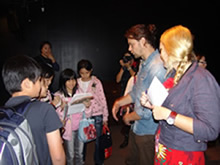 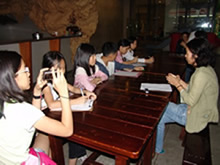 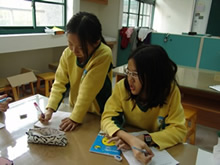
From this research project, the teachers instructed us to use the KWL method and how to collect information and summarizing the focus which we want . It was a great helpful method for us to collect and organize data, and how to absorb large amounts of data ,and contextualize pieces of data into relevant passages. We also used the KWL method in discussing , oral presentation and interview process . It also effected improvement in our writing skills due to the frequency by which we were required to do. |
| Mathematics Learning Areas |
 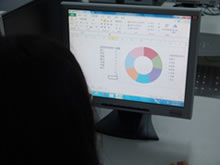 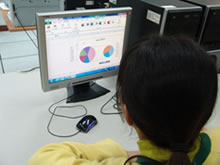
We used Excel software to calculate the contribution of everyone in the activities .Teachers taught us how to use the Excel software and discussed the chart which one is suitable. Although each of us was very hard, there was a few difference performance in the chart. We keyed data into a table, selected the render graphics. We were rendering each pattern to give it a try, and finally selected the pie chart to show everyone's contributions in the events. |
| Social Study Learning Areas |
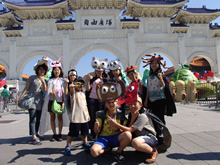 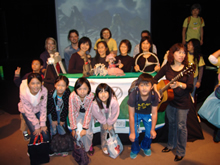 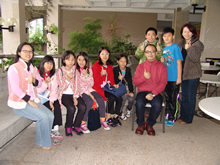
Social studies learning areas emphasizes the" Interpersonal interaction", so we have chosen the "Dream Community Cultural and Educational Development Foundation (DCEF)" as the research topic, The purpose of its establishment from the founders hopes to inspire the community to concern the environment and daily life . It did coincide with the social studies goals. By studying the process, we field survey, interview the characters , participate in carnival activities, go deep into the DCEF activities to understand how to the Foundation through daily life and carnival activities use a subtle way to link up the peoples, the communities and the groups. It let us also learn how to gather a practical action to condense the interpersonal relationships, the living environment and the care of our land. |
最
| Science and Technology Learning Areas |
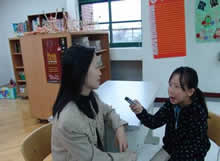 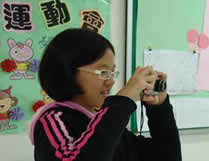 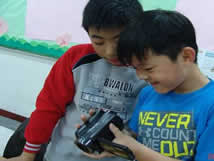
In the course of studies, where we most often met to discuss, was the computer classroom, because we can immediately searched the Internet through computer data, records for the discussions, and meeting content, uploaded progress to the Web page. At home, we also via the Internet, e-mail, shared information, uploaded data and contacted the characters. We used a digital camera, DV camera, mobile phone, MP3 recorder recorded the course of our activities, and under the guidance of teachers and parents using the Web technologies and image processing software to organize data into the Web sites. We made full use of various information technology equipment, and greatly enhanced information capabilities. |
| Art and Culture Learning Areas |
  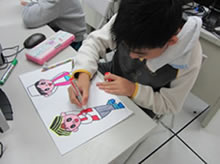
In the course of studies, we have learned from making props, actually participated in the art carnival activities, and it was a firsthand experience for us to enjoy an art feast of delight and abundance. By visiting the DCEF process, we also felt the resident village artists and the community residents would be combined with the highest level of art and life. The reason we jumped for joy was that we had the opportunity to face-to-face directly dialogue with the foreign artists, and consulted them to how to gain the artistic inspiration from life. It was a real pleasure. |
| Integrated Activities Learning Areas |
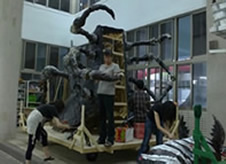 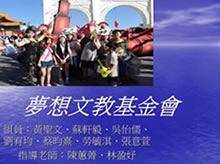 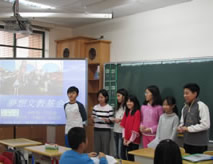
It was the method of this project to participate in activities and interview the characters .After recognizing the DCEF to make efforts into guide the community consciousness and humanistic concern, we followed the DCEF volunteers and the Nei-hu Community college artist to participate in pre-carnival job, to know the story behind the carnival production , to prepare the all things of the activities, then we understood that we must arrange in advance from small details to proceed, think about the presentation of the results. We also presented our research to all classmates. By production of participating in the project, we not only developed the interpersonal skills and communication skills, but also learn to become a member of society by participating in foundations, social care activities and social services . |
█Working with information tools and technologies:
Technology Tools |
Usage Instructions |
Personal Computers |
Including laptop computers, notebooks,tablets. We use them to processing word, designing webpage, data collection, designing site map. |
Internet |
By searching in the internet , we could get to get more information, upload progress, e-mail contact and sharing of information. |
Software |
Office Software: word, power point, notepad ( to process word and presentation)
Image Processing Software: Photoimpact,Acdsee ( to edit and modify images)
Web Design Software: Frontpage, Flash ( to create and edit webpage) |
Digital Camera
Digital Vedio Record
Voice Redcorder |
To take pictures and record interviews and activities |
Scanner |
To scan our drawing and process our pictures. |
Printer |
To print data and interview questions papers. |
Telephone |
To get in touch to confirm the time and place of the interviewee. |
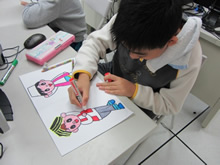 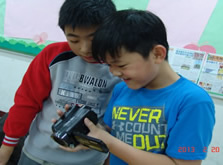 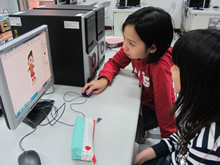 |
█The "Community Ambassadors" in the Project
- Toward the crowd: We visited the DECF Foundation, interviewed the founder, the planner, participated arts carnival parade, worked with the foundation staff, and artists staying in the community etc. It provide many chance for us to face to face contact and interaction, so many people knew that we were participating in The International Schools CyberFair.
- Use the network: We produce website for the DECF Foundation and shared the project through our school website, so parents, teachers and community members can read.
- Share the results: We also shared the research proceed and results to our school classmates. It not only introduce the DCEF to other students and teachers about their vision ,carnival activities, which have a deeper understanding about the DCEF and International Schools CyberFair, but also to attract people to participate in the arts parade and International Schools CyberFair .
|
█The Impact of the Interaction with Our Community:
Although many people know the dream carnivals were hold in the Chiang Kai-Shek Memorial Hall and Ke-tagal-an Boulevard in Taipei City, they don’t know the meaning of establishment behind the Foundation. However, through this project, our parents who personally involved in the activities will share the results of the activities to others. we also share it to our school classmates and hope that it will link the power of people, communities and groups by enhancing the vitality of Taiwanese ,and create a great representative international Taiwan Festival Activities. |
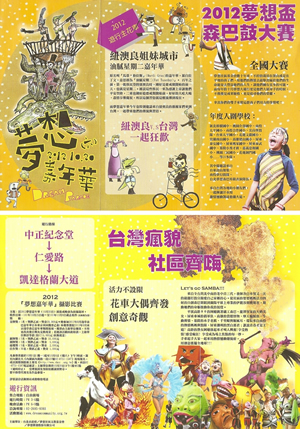 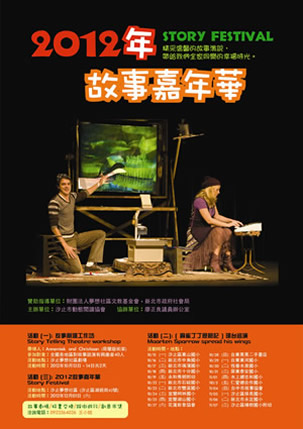 |
█Discoveries, lessons, and surprises
While doing this project, we have interviewed the foreign artists, participated in the arts carnival parade, which is an unprecedented experience for us. After participating in the Cyberfair, We knew exactly how to write a progress report, process the research, how to make a webpage, cooperate with team and so on. Thankfully, with much practice for everyone who helps us during the project , we were able to muster the courage to complete the research. |
|